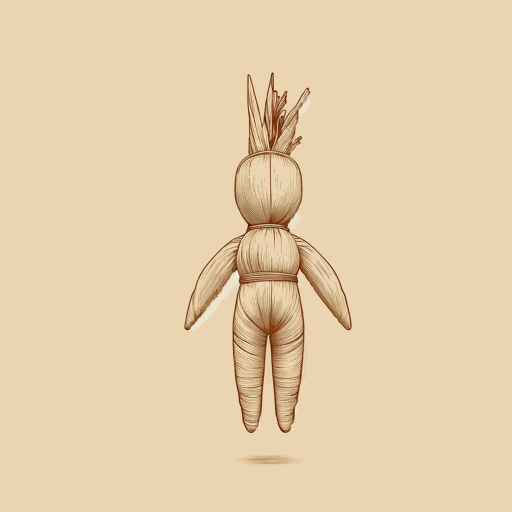56 pages • 1 hour read
Eric GansworthApple: Skin to the Core
Nonfiction | Memoir in Verse | YA | Published in 2020A modern alternative to SparkNotes and CliffsNotes, SuperSummary offers high-quality Study Guides with detailed chapter summaries and analysis of major themes, characters, and more.
Summary and Study Guide
Overview
Apple (Skin to the Core) is a memoir in verse by Haudenosaunee writer and artist Eric Gansworth and was published in 2020. The memoir’s title is a reference to “apple” as a derogatory term implying a view of Indigenous people as insufficiently connected to their culture; they are, according to the logic of the epithet, “red on the outside, white on the inside” (23). Gansworth’s memoir explores his family’s history, the intergenerational trauma that Indigenous people experienced because of the residential school system and other forms of colonialism, and his own journey to adulthood and self-understanding. In addition, the text draws heavily from the discography of The Beatles.
In 2020, Apple was longlisted for the National Book Award for Young People’s Literature. In 2022, it won the American Indian Youth Literature Award for Best Young Adult Book.
This guide uses the 2020 e-book published by Levine Querido.
Content Warning: Apple contains discussions of anti-Indigenous racism, the historical and ongoing forms of colonial violence and cultural genocide against Indigenous people in North America, child abuse, and substance abuse. Gansworth uses the term “Indian” to refer to himself and others. This guide uses that term only in direct quotations because it is considered derogatory and can be reclaimed only by Indigenous people.
Summary
Through a series of poems, Gansworth describes his family history. He has family from both the Onondaga and Tuscarora Nations. His grandparents were sent to residential schools, as were their siblings. There, they were forcibly separated from their culture, converted to Christianity, and exposed to dangerous diseases while living in cramped quarters. Gansworth’s grandparents decided not to speak their native languages to their children, breaking away from their cultures of origin. They did this partly to protect their children from being taken from them and forced to assimilate, and partly because they’d come to associate their cultures with shame. Gansworth, the youngest of seven children, is five years younger than his next-closest sibling. He was born on the Tuscarora Reservation in New York, near the border with Canada, though he was enrolled in the Onondaga Nation. As a result, he felt permanently out of place in his community.
Gansworth grew up dealing with the many challenges of poverty. His home didn’t always provide him with enough food, his house wasn’t heated, and it had only three bedrooms for 11 people. He found solace in stories about superheroes, which earned him the nickname “Batman.” When he was young, one of his older brothers was drafted to fight in the Vietnam War and asked his family members to buy any new Beatles albums that were released while he was away. Gansworth developed a love for The Beatles through his brother. He often felt out of place with his family members as he was growing up, though he couldn’t then determine why. His father, an iron worker, was often absent. When he was around, he paid little attention to Gansworth.
Gansworth was close friends with a girl who lived near him. Throughout the memoir, Gansworth refers to her only as Jaboozie. She taught him to make cornhusk dolls, traditional crafts that Gansworth’s family members disapproved of. Gansworth maintained his love of superheroes for longer than other kids but he was disappointed to find no superheroes who were Indigenous like him. He attended school on the reservation, which meant that he took classes that taught him about his history, but because he was Onondaga, not Tuscarora, and because of his family’s unwillingness to honor their heritage, he felt isolated from his peers when they learned their traditional dances.
When Gansworth turned 11, he started working during his school holidays. He did farm labor for very low pay and also worked at a garage. Half his pay went toward paying the bills, while he got to keep the other half. He spent it on the same things any teenager did then: secondhand clothes, Star Wars trading cards, and food from McDonald’s. In addition to The Beatles, Gansworth loved David Bowie; he felt that on some level they were alike. He learned to draw, creating a mural of Darth Vader on his bedroom wall. Although he loved making art, his father was derisive toward him for doing so. On Saturdays, Gansworth babysat his niece and nephew. They lived in a trailer, but their life seemed luxurious: They had hot running water and a heater to keep them warm. His mother bought him a secondhand electric blanket, but it started sparking, so he had to stop using it or risk starting a fire.
Gansworth got a fake ID and started going to bars with other kids from the reservation. He started smoking; his mother ignored this, and in exchange, he sometimes gave her money to attend BINGO games. She never won the jackpot. Gansworth and Jaboozie grew closer, but she was two years older than him and soon left for college. However, because she married one of Gansworth’s cousins, she stayed in touch and effectively became family. As he approached graduation, Gansworth realized that he couldn’t afford to take the SATs, let alone attend college. While most of his peers moved on, he remained on the reservation, working low-paying jobs and wondering what the future held. Eventually, he got to attend a local community college that didn’t require an SAT score, and his future started to open up. He moved into his own apartment and, at college, studied science and medicine. Initially, his grades were poor. He found anatomy classes challenging, as he knew that many medical specimens were the remains of Indigenous people who hadn’t consented to having their bodies donated to science. Despite his difficulties, Gansworth’s grades started to improve. Having realized that he was gay, he started dating a man named Larry.
Gansworth’s mother always hoped that he’d move back home or at least back to the reservation, but he knew he never would. Instead of going into the medical field, Gansworth became a writer and artist. When he was in his early twenties, his childhood home burned down, and most of his family photographs were lost. An ethnographer who’d interviewed Gansworth’s grandmother years ago sent tapes of her speaking Tuscarora, which helped with an ongoing language revitalization project. Both Gansworth’s parents died, and he realized that he’d become an Elder despite being in his forties.
Members of the younger generation work hard to keep Onondaga and Tuscarora culture alive and are succeeding. Gansworth returns to the reservation for holidays and cultural events, finally finding more positive ways to connect with his heritage. He has stayed with Larry and has become a published author.
Featured Collections
Colonialism & Postcolonialism
View Collection
Coming-of-Age Journeys
View Collection
Community
View Collection
Contemporary Books on Social Justice
View Collection
Family
View Collection
Indigenous People's Literature
View Collection
LGBTQ Literature
View Collection
Memoir
View Collection
National Book Awards Winners & Finalists
View Collection
The Best of "Best Book" Lists
View Collection


